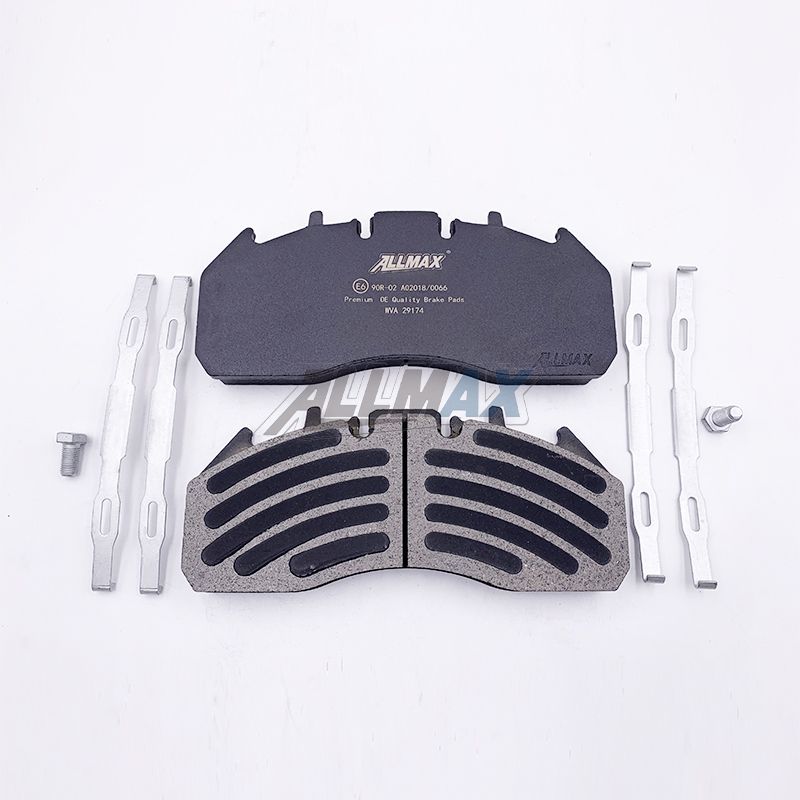Jun. 26, 2023
Automobiles & Motorcycles
The performance of commercial vehicle brake pads plays a critical role in ensuring safe and effective braking. Several factors can influence the performance of these brake pads. Understanding these factors is essential for maintaining optimal braking performance and ensuring the safety of commercial vehicles. Here are some key factors that can affect the performance of commercial vehicle brake pads:

The material composition of the brake pads significantly impacts their performance. Different materials, such as organic, semi-metallic, and ceramic, have varying characteristics. Organic brake pads typically provide smooth and quiet braking but may wear faster. Semi-metallic brake pads offer excellent stopping power and heat dissipation but can be noisier. Ceramic brake pads provide superior performance, low noise, and less brake dust but are generally more expensive. Choosing the right material that suits the specific requirements of the commercial vehicle is crucial for optimal performance.
Commercial vehicles often operate in demanding conditions that can generate high braking temperatures. The ability of brake pads to maintain their performance across a wide temperature range is crucial. Brake pads should be designed to provide consistent and reliable braking performance under both normal and extreme temperature conditions. Heat-resistant materials and effective heat dissipation mechanisms are important considerations for commercial vehicle brake pads.
The load and weight capacity of commercial vehicles can vary significantly. Brake pads need to be able to handle the additional stress and braking forces generated by heavy loads. Choosing brake pads that are specifically designed for the weight capacity and load requirements of the vehicle is essential. Brake pads with higher friction coefficients and greater heat dissipation capabilities are often recommended for commercial vehicles with heavy loads.
Commercial vehicles operate in diverse driving conditions, including urban areas, highways, and off-road environments. The type of driving conditions can affect the performance and wear characteristics of brake pads. Frequent stop-and-go traffic in urban areas can increase wear, while high-speed driving on highways may require brake pads with enhanced heat dissipation capabilities. Consider the specific driving conditions in which the commercial vehicle will be used and choose brake pads that are suitable for those conditions.
Proper maintenance and bedding-in procedures can significantly impact the performance of brake pads. Regular inspections, cleaning, and replacement of worn brake pads are essential for optimal performance and safety. Additionally, proper bedding-in of new brake pads helps establish an even transfer layer between the pad and the rotor, improving braking efficiency and reducing the risk of uneven wear or brake noise.
The quality and manufacturing standards of brake pads can vary among different manufacturers. Choosing brake pads from reputable manufacturers who adhere to industry standards is crucial. Brake pads that meet or exceed industry standards are more likely to provide consistent performance, durability, and safety.
Commercial vehicles have different brake system designs and configurations. Ensuring that the selected brake pads are compatible with the specific brake system of the vehicle is important for optimal performance. Consider factors such as pad dimensions, attachment mechanisms, and any compatibility requirements specified by the vehicle manufacturer.
Monitoring the thickness of the brake pads and paying attention to wear indicators are crucial for maintaining optimal braking performance. Worn brake pads with inadequate thickness can compromise braking efficiency and safety. Regular inspection and replacement of brake pads as they approach their minimum thickness are necessary to ensure reliable braking performance.
In conclusion, several factors can affect the performance of commercial brake pads. Material composition, temperature range, load and weight capacity, driving conditions, maintenance and bedding-in procedures, quality and manufacturing standards, brake system compatibility, and pad thickness all play significant roles. By considering these factors and selecting brake pads that meet the specific requirements of the commercial vehicle, optimal braking performance, safety, and durability can be ensured. Regular maintenance and adherence to manufacturer recommendations are also essential for maximizing the performance and lifespan of commercial vehicle brake pads.
Suggested reading:Previous: Advantages and Benefits of Electric Trucks
Next: Car Mat: Enhance Your Driving Experience with Premium Comfort and Protection
Related Articles
If you are interested in sending in a Guest Blogger Submission,welcome to write for us!
All Comments ( 0 )